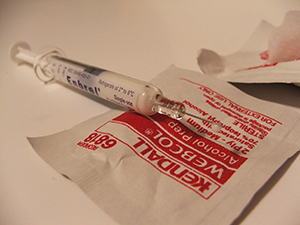 The number of U.S. measles cases so far this year rose 19% in the past week, to 121 people in 17 states, the Centers for Disease Control and Prevention said Monday, raising concerns about how far the virus has spread.
The number of U.S. measles cases so far this year rose 19% in the past week, to 121 people in 17 states, the Centers for Disease Control and Prevention said Monday, raising concerns about how far the virus has spread.
A week earlier, the CDC reported 102 cases in 14 states.
The CDC said the increase isn’t surprising given that state and local health departments continue to track down people who had been in contact with those with the disease.
About 85% of the cases reported between Jan. 1 and Feb. 6 are part of a multistate outbreak that began at Southern California’s Disneyland Resort in December, the CDC said. The agency has said that most of those linked to the Disneyland outbreak weren’t vaccinated.
Walter Orenstein, an immunization expert and associate director of Emory University’s Vaccine Center, said it concerned him that “we have so many states reporting cases, which can lead to multiple outbreaks.”
Measles are back in the news, as some parents opt out of vaccinations for their kids. Here’s how the virus impacts the body.
It is important to stop further transmission by identifying people who were in contact with those who have measles, isolating them if they develop the disease, and giving emergency vaccination when possible, he said.
In addition, Dr. Orenstein said, “We are now in the traditional ‘high transmission season’ for measles,” which is late winter and early spring.
The vast majority of all cases this year are in California, at 88, followed by Arizona, with seven. Four cases were reported in Washington, three in Illinois, two each in New York, Nebraska, Nevada, South Dakota and Utah, and one each in Colorado, the District of Columbia, Delaware, Michigan, Minnesota, New Jersey, Oregon, Pennsylvania, and Texas.
Separately, the Georgia Department of Public Health on Monday confirmed the state’s first measles case since 2012. The infected infant arrived in Atlanta from overseas and is being cared for at a children’s hospital in the city.
The CDC’s numbers may be smaller than those reported by states due to a time lag in confirming suspected cases.
The Disneyland outbreak likely started when a traveler infected with measles overseas visited the amusement park, the CDC said. The agency said its analysis shows the virus behind the outbreak is identical to a virus type that caused a large outbreak in the Philippines last year.
But the virus type appears to be common: It has been identified in 14 other countries and at least six U.S. states with cases that aren’t linked to Disneyland.
Source: Betsy Mckay



Share Your Comments & Feedback: